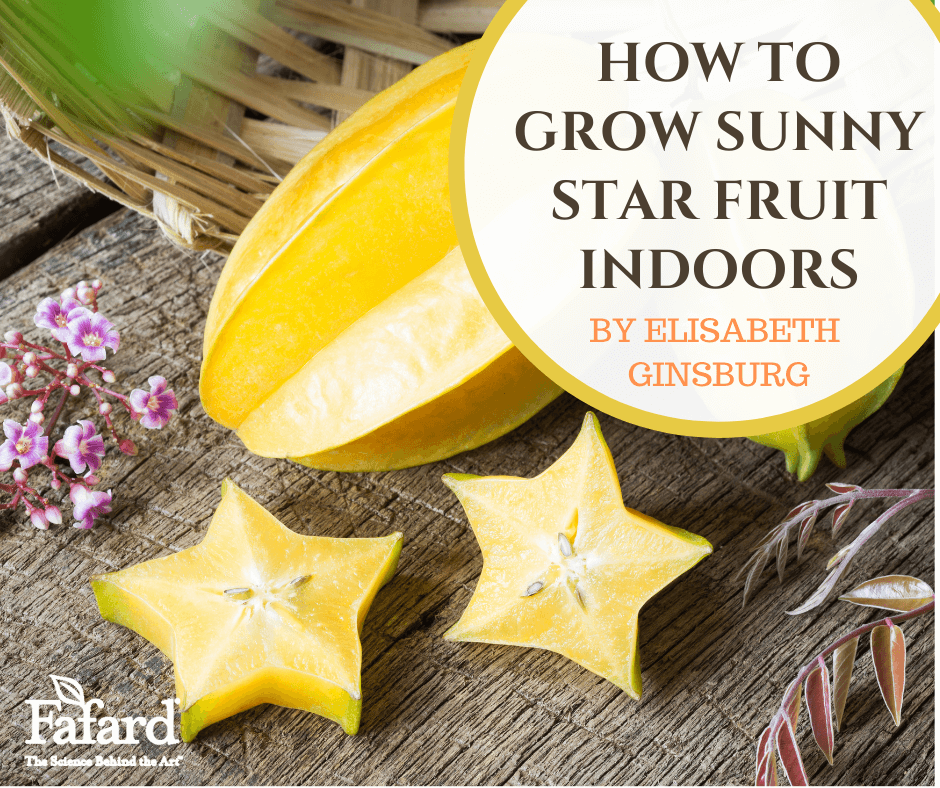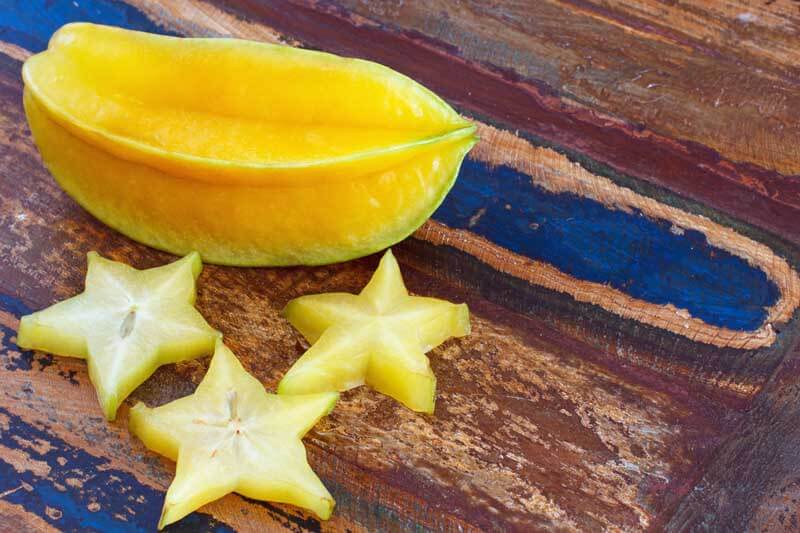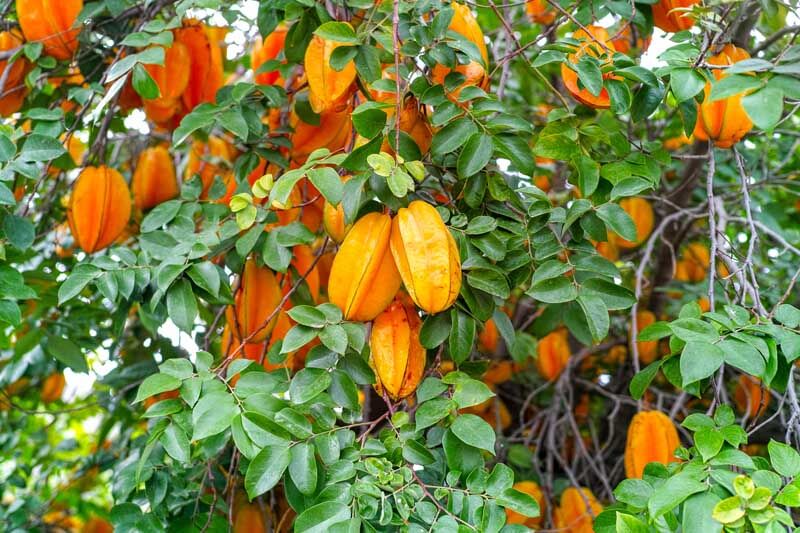
Looking for an easy-to-grow fruit that will bring light and sparkle to your gardening life during the darkest months of the year? Tasty, tropical star fruits (Averrhoa carambola) may be the answer, even if you live in a cold-winter climate. Dwarf trees have made indoor growing possible.
Angular star fruits are succulent and taste much like tangy grapes. At home in the tropics of Southeast Asia, hanging from 20- to 30-foot tall trees, star fruits don’t look very celestial. Yellow-orange in color and 3 to 4 inches long, each sports a waxy skin with five prominent greenish ridges. When the fruits are cut crosswise, those ridges morph into the five points of a star, giving rise to the common name.
A Century in North America

Though exotic in appearance, star fruits, also sometimes known as carambola, are not newcomers to the North American scene. The trees first arrived in Florida about 100 years ago and have been grown commercially and in Florida, California, and Hawaii ever since. Early star fruit varieties were smaller and very tart, but breeding improvements have led to the larger, sweeter fruits, that are available in supermarkets today.
Versatile Star Fruit

All parts of the fruit, including the rind, flesh, and seeds, are edible and provide vitamins A and C, plus minerals. Eaten out of hand or used in salads or desserts, star fruit is both tasty and decorative. Most people can enjoy them regularly, but they are high in oxalic acid, which can cause kidney problems for those with related illnesses, so consult health care providers before eating lots of them.
Growing Star Fruit Indoors

If you live in a cold-winter climate, you can enjoy homegrown star fruit if you pick a dwarf variety, like ‘Maher Dwarf’, which has sweet, crunchy fruit, or ‘Dwarf Hawaiian’, which has super sweet fruit, in large containers—at least during the cold weather months. Both varieties bear fruit when trees are just a few feet high, and they are self-fertile, so their clusters of pink flowers don’t require pollination.
To flourish indoors, potted star fruits need well-drained, loamy soil (Fafard® Natural & Organic Potting Mix) with a slightly acid pH (5.5-6.5) and regular fertilizer for acid-loving fruit trees. Provide them with lots of sunshine and enough water to keep the pots just moist. The trees perform best when temperatures are above 60 degrees Fahrenheit and the air is moderately humid.
Dwarf plants are best for pot culture because they are bred to stay compact. Depending on your finances and level of patience, you can begin your star fruit journey with a starter specimen in a 6-inch pot or choose a mature 3- to 4-foot tree. Buying a larger specimen is a faster route to fruit, while smaller plants take a while to produce but are the least expensive.
Either way, give your new potted star fruit a good start by trading its nursery pot for a slightly larger one and filling it with our high-quality, natural and organic potting mix. If the plant will travel between outdoor and indoor locations, opt for a relatively lightweight pot or use a pot platform with casters that can be wheeled back and forth as the seasons change.
Growing Star Fruit Outdoors

As tropical denizens, star fruit trees love warmth. If possible, let them spend the late spring, summer, and early fall soaking up sunshine outside. A protected location shielded from wind will help keep trees healthy and happy. If you choose a starter specimen in a 6-inch pot, expect to see pink flowers and resulting fruit by the time it reaches about 18 inches tall. Strong growth spurts will bring more flowers and fruit.
When outdoor night temperatures fall below 60 degrees Fahrenheit, bring the star fruit indoors. Position it in a situation with as much bright light as possible and make sure that room temperatures do not fall below 60 degrees. If the plant drops a few leaves in the days after the transition, don’t worry. Indoors or out, water when the top few inches of soil feel dry. Higher humidity will improve the growth of these tropical trees.
Feeding Star Fruit
Star fruit trees grow most actively in spring and summer, so this is the time to fertilize with balanced, granular fertilizer, added at intervals according to manufacturers’ directions. Growth slows down during the winter months, so feeding can stop at that time. At winter’s end, just as you are about to start fertilizing again, prune back branches that seem weak or unshapely. Dwarf trees generally need relatively little pruning.
If you like the tropical taste of star fruit and relish a horticultural challenge, try adding a dwarf star fruit tree to your house plant menagerie. It may be the start of a tropical fruit tree collection.
(Click here to learn more about growing other tropical fruit trees indoors.)

